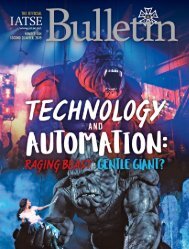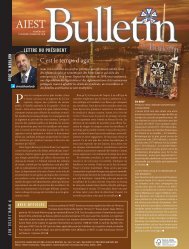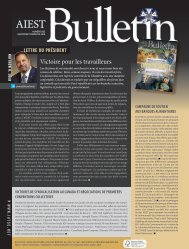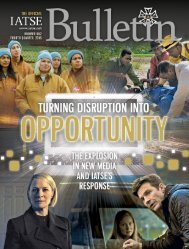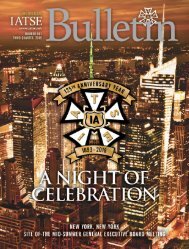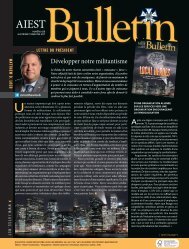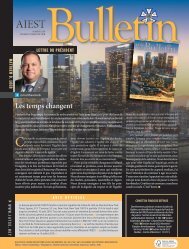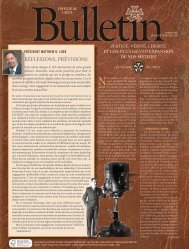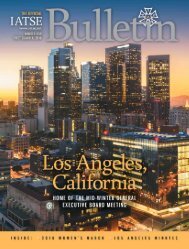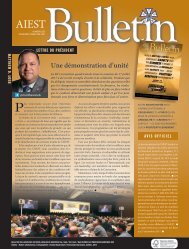IATSE-2nd2018_web
Create successful ePaper yourself
Turn your PDF publications into a flip-book with our unique Google optimized e-Paper software.
This prediction was perhaps a decade too early, but it did<br />
come to pass in the 1980s.<br />
The video boom brought massive copyright infringement,<br />
a persistent problem which the Alliance and others constantly<br />
fight with great vigor. The pirating of Hollywood productions<br />
eventually led to the commercial release of major films on the<br />
video market, to circumvent the movie and television pirates and<br />
to encourage the public to buy the tape before it hit commercial<br />
TV or a pay channel.<br />
But a new phenomenon would have an even greater impact<br />
on the industry itself — the merger mania of the 1980s. The<br />
buying and selling of television networks, movie studios and<br />
individual station outlets caused great upheaval in the industry<br />
during the twelve years of Presidents Ronald Reagan and George<br />
H.W. Bush. Out of this came a fourth network, the Fox Network,<br />
and the takeover by Time, Inc. of the Warner communications<br />
empire.<br />
These two events were momentous in the evolution of<br />
the entertainment industry — though only a prelude to what<br />
was to come in the decades hence. Unfortunately, while these<br />
developments increased the demand for shows to fill air time,<br />
program quality was not immediately part of the formula.<br />
And IA members did not benefit from the station explosion.<br />
THE LEGACY OF WALTER DIEHL<br />
The <strong>IATSE</strong> was fortunate to<br />
have Walter F. Diehl as International<br />
President during the turbulent period<br />
from 1974 through 1986. He<br />
began his career as a projectionist<br />
and soon rose to a succession of<br />
leadership roles in his local union<br />
and the International. As International President, he built on<br />
the record of his predecessor, Richard Walsh, to ensure that<br />
the IA would remain the preeminent labor organization in the<br />
entertainment industry. He was scrupulous in ensuring that<br />
the affairs and finances of the IA and all local unions were<br />
above reproach. And he worked tirelessly to enhance the image<br />
of <strong>IATSE</strong> in the public eye. All of today’s members owe<br />
him a great debt of gratitude.<br />
Reruns of old TV shows popped up on cable, along with<br />
old and not-so-old movies. Networks and superstations began<br />
filling their late-night hours with news shows and talk show<br />
programming. The increase in broadcasting hours provided<br />
some work to <strong>IATSE</strong> members, but, as always, every job was<br />
fought for and hard won.<br />
THE THEATER MODERNIZES<br />
From the 1940s onward, the theater changed rapidly, both to accommodate the evolving tastes of audiences in changing times,<br />
and to address the competition posed by movies and television. The successful shows of the 1940s and 1950s had extremely<br />
long runs, but the number of road companies decreased. The lure of Hollywood and the new medium of television continued<br />
to draw many established starts and IA members away from the stage.<br />
Throughout this period, show sets became more realistic and<br />
were placed against stylized backdrops. Colors were bright and<br />
strong, described by one theater expert as “posteresque.”<br />
PLAYING IT STRAIGHT<br />
During this period, staging of serious dramatic material became<br />
less directly representational and more surreal. The crafts-<br />
49




